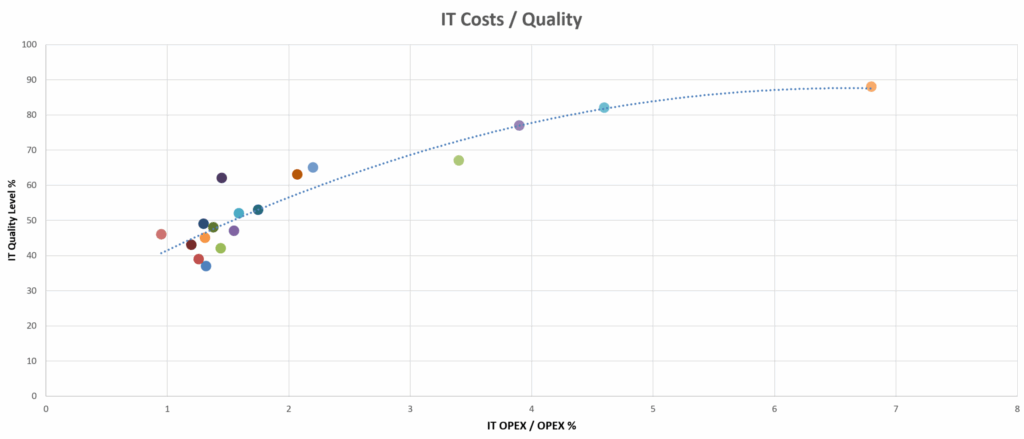Cost benchmarking is a common management practice, frequently used within IT management. Perhaps the most widely recognized metric compares IT operational costs to total enterprise costs. This benchmark provides industry-specific ranges, often interpreted as indicators of reasonable IT spending relative to the organization’s sector.
However, relying solely on this approach presents several significant problems. First, cost benchmarking often incorrectly implies that lower IT costs automatically equate to better overall efficiency for the organization. Second, an IT department that is highly underinvested and operates reactively might appear to excel according to this benchmark. This can effectively mask critical underlying issues like missing critical IT goverenance components or a diminished inability to innovate.
The fundamental issue stems from this approach missing the crucial dimension of quality. It fails to measure and combine cost and quality as two interdependent factors that truly define IT value.
A more insightful picture emerges when cost benchmarks are combined with quality benchmarks. This combination enables a more nuanced interpretation of the findings. It facilitates a data-driven discussion about setting context-relevant target levels for both cost and quality, reflecting the organization’s specific needs and goals.

For instance, measuring overall IT quality using a methodology like the IT Quality Index (ITQI) provides CIOs and executives with the data needed to assess where they currently stand and where they realistically aim to be – considering both quality and cost perspectives.
But this isn’t the whole story. We can dive even deeper by integrating quantitative cost metrics with other important qualitative insights, such as the level of IT reactivity (vs. proactivity), an innovation index, or the collaboration quality within IT or within teams.

In conclusion: Too frequently, IT reporting is driven solely by quantitative cost metrics, neglecting the vital quality dimensions. For effective, modern IT management, it is essential to balance quantitative and qualitative metrics to gain a complete and accurate picture of IT performance and its true contribution to the business.
